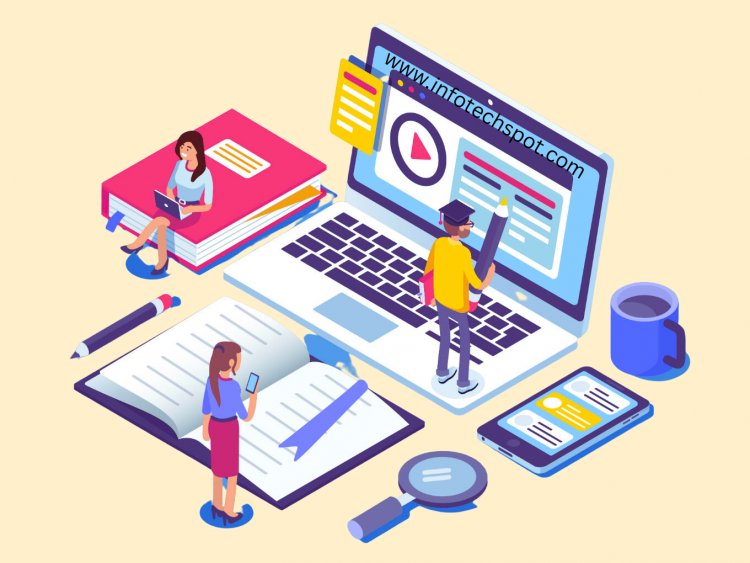Revolutionizing Education
We will explore the power of EdTech and delve into its various benefits, challenges, and the future it holds in shaping the education landscape.

The Power of EdTech in the Classroom:
Education is an ever-evolving field, and technology has played a significant role in transforming the way we learn and teach. EdTech, short for educational technology, has emerged as a game-changer, revolutionizing the traditional classroom experience. By integrating technology into education, students and educators alike can unlock a world of opportunities and enhance the learning process. In this article, we will explore the power of it and delve into its various benefits, challenges, and the future it holds in shaping the education landscape.
Enhancing Learning Experiences:
It has transformed the way students learn by creating immersive and engaging experiences. Interactive learning tools, such as educational apps, virtual reality (VR) simulations, and online platforms, provide students with opportunities to explore complex concepts in a more hands-on and visual manner. This technology enables personalized learning, allowing students to progress at their own pace and cater to individual needs. Furthermore, it fosters collaboration and communication among students, facilitating teamwork and enhancing critical thinking skills.
Teachers have also benefited from it in terms of delivering content effectively. Digital presentations, interactive whiteboards, and multimedia resources enable educators to present information in captivating ways, making learning more enjoyable and accessible. With the help of data analytics, teachers can track students' progress and identify areas where additional support is needed. This data-driven approach empowers educators to provide targeted interventions and personalized feedback, resulting in improved learning outcomes.
Overcoming Educational Barriers:
It has the potential to bridge the gap between educational opportunities and resources. It has proven particularly beneficial in underprivileged communities, where access to quality education is limited. With online learning platforms and digital resources, students can access educational content from anywhere, breaking down geographical barriers. Additionally, It tools accommodate diverse learning styles and cater to students with disabilities, ensuring inclusivity in the educational process.
Language learning is another area where It has made significant strides. Language learning apps, virtual tutors, and translation tools enable students to develop proficiency in multiple languages. Such resources offer interactive exercises, real-time feedback, and cultural immersion, transforming language learning into an engaging and dynamic experience.
Moreover, It has democratized education by providing open educational resources (OER). These free and accessible materials, ranging from textbooks to lecture videos, empower students and educators to share knowledge and collaborate globally. This sharing culture promotes continuous learning and professional development, fostering a sense of community among learners and educators worldwide.
Challenges and Considerations:
While EdTech holds immense potential, it is essential to acknowledge and address its challenges. Firstly, the digital divide poses a significant obstacle, as not all students have equal access to devices and internet connectivity. To ensure equitable access, governments, and educational institutions must invest in infrastructure and initiatives that provide access to technology for all students.
Data privacy and security are also crucial concerns in the realm of it. Educational institutions must implement robust data protection measures and comply with privacy regulations to safeguard student information. Balancing the benefits of data-driven insights with privacy considerations is a delicate task that requires ongoing monitoring and adaptation.
Additionally, it is essential to strike a balance between technology and human interaction. While it enhances the learning experience, face-to-face interactions between students and teachers remain vital for emotional support, socialization, and building relationships. Educators must strike a balance between utilizing technology as a tool and maintaining the human element of education.
The Future of EdTech:
Looking ahead, the future of EdTech appears promising. Emerging technologies like artificial intelligence (AI), machine learning, and augmented reality (AR) are poised to revolutionize education further. AI-powered tutoring systems can provide personalized instruction tailored to individual student needs. AR can create immersive learning environments, allowing students to interact with virtual objects and explore complex concepts.
Furthermore, advancements in it will likely enhance online collaboration and enable global connections among students and educators. Virtual classrooms, international collaborations, and cultural exchanges will become more commonplace, fostering a truly interconnected global education ecosystem.
Conclusion:
It has unleashed a wave of innovation in education, transforming the way we learn and teach. By leveraging technology, educators can create dynamic and personalized learning experiences that cater to diverse needs. While challenges such as access, privacy, and maintaining human interaction persist, the future holds great promise. As we continue to harness the power of it, we can empower learners, break down barriers, and pave the way for a more inclusive, engaging, and interconnected educational landscape.













